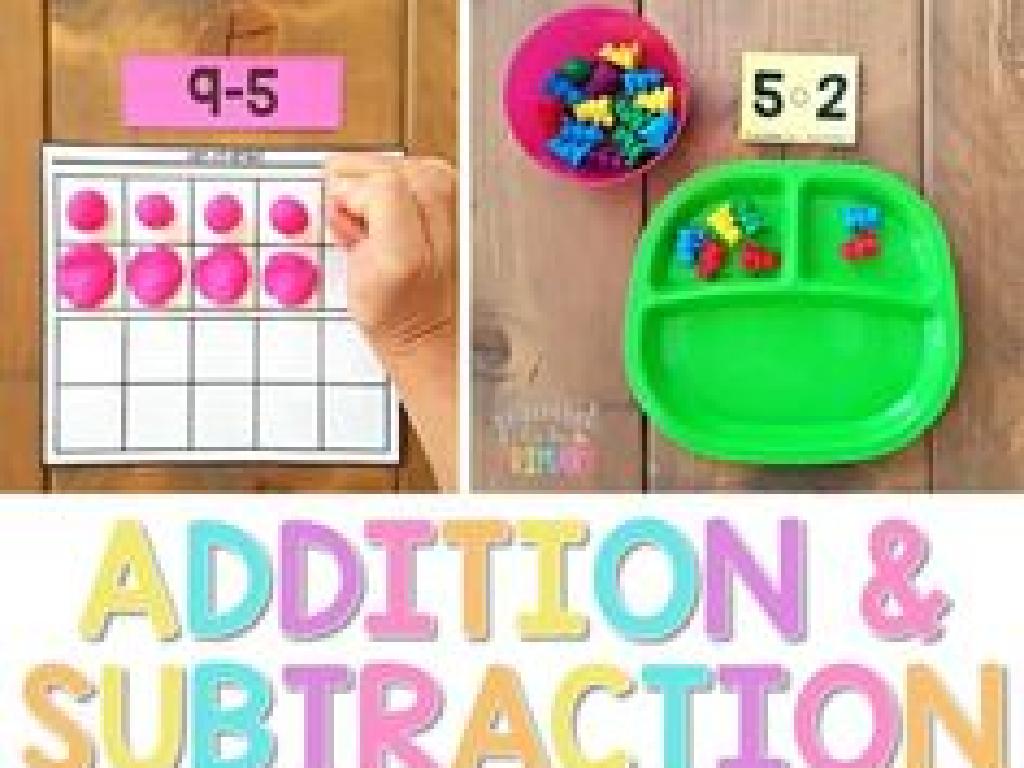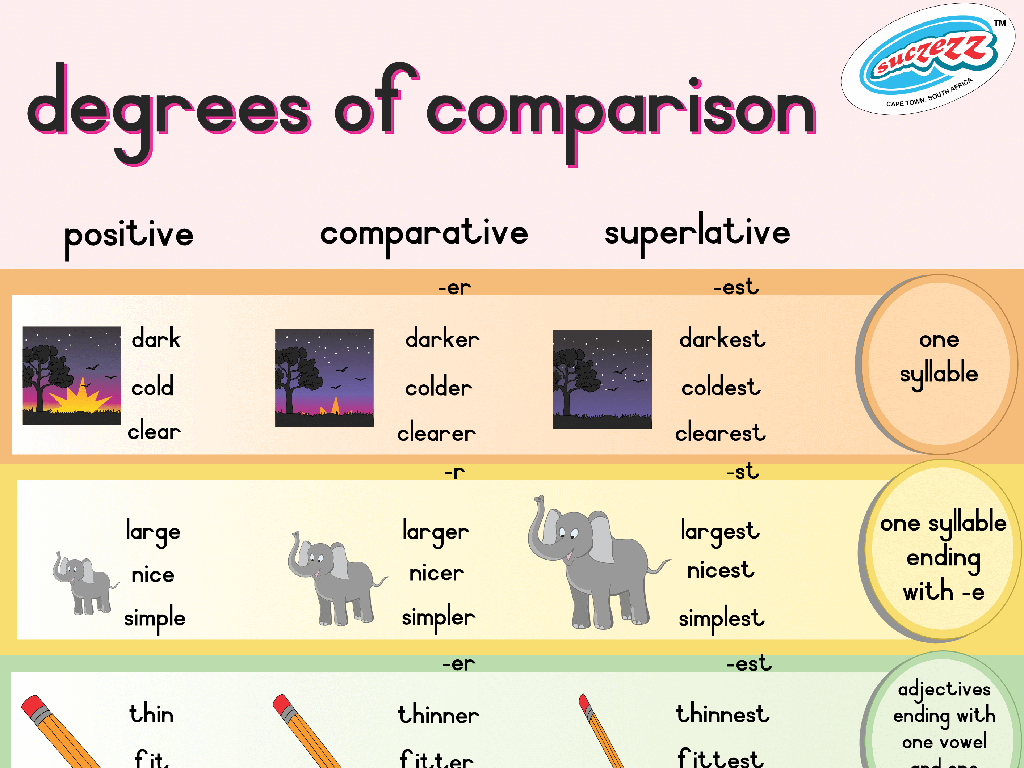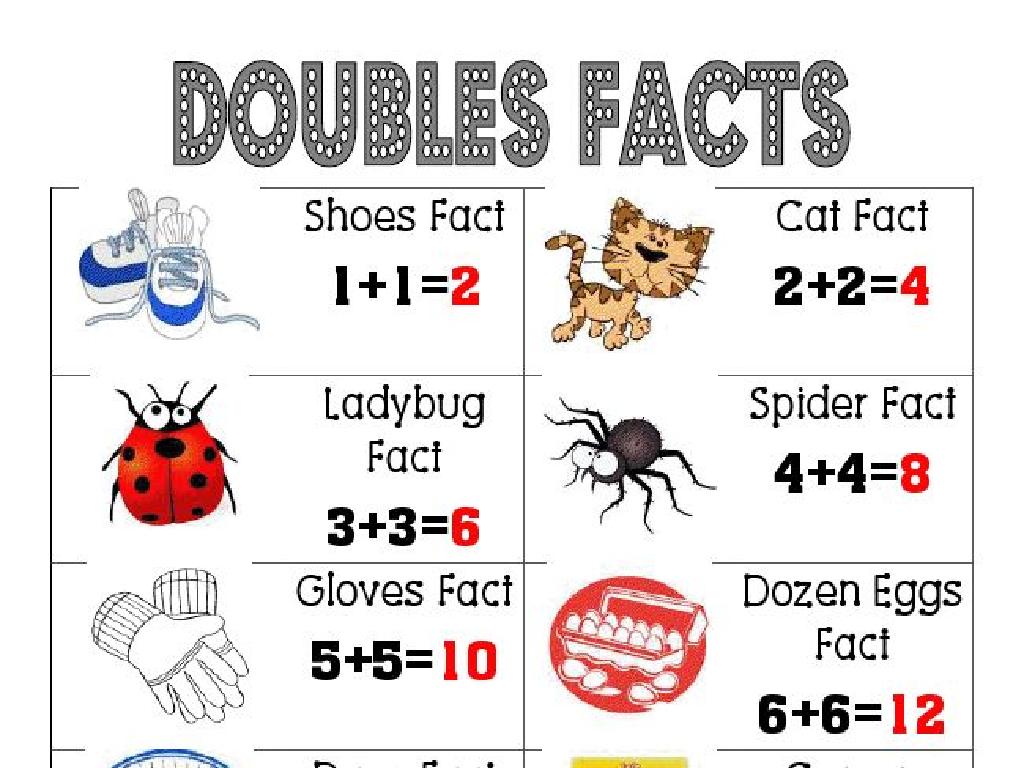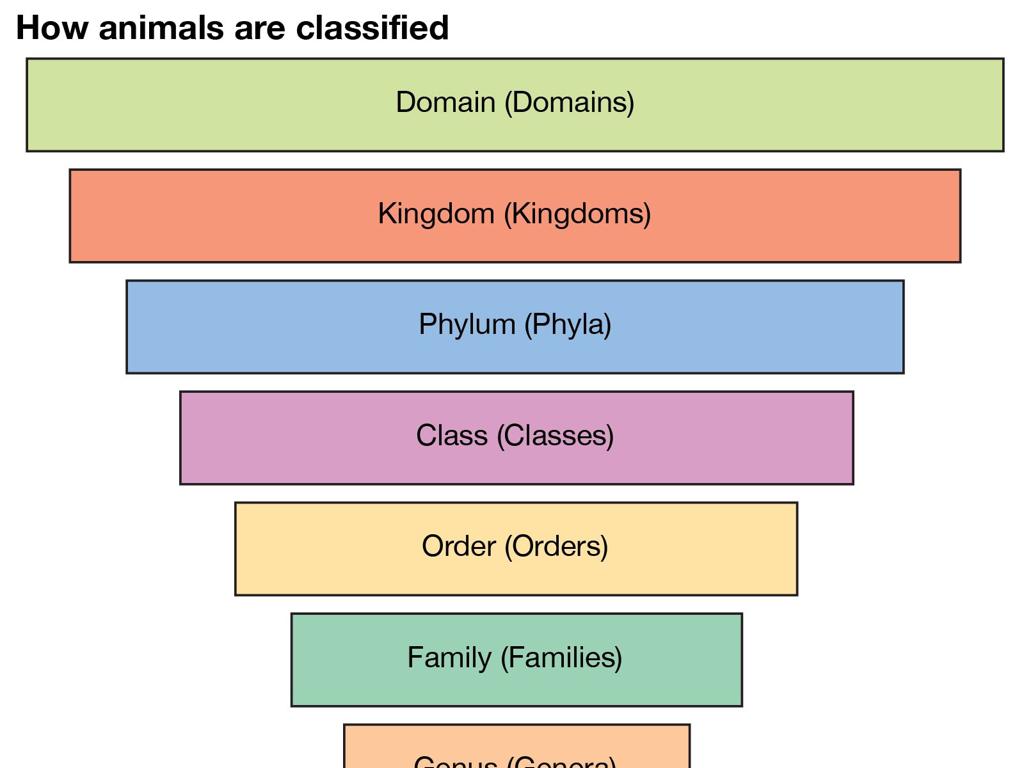Add Integers Using Counters
Subject: Math
Grade: Sixth grade
Topic: Operations With Integers
Please LOG IN to download the presentation. Access is available to registered users only.
View More Content
Adding Integers Using Counters
– What are integers?
– Integers include whole numbers and their negatives
– Counters as a learning tool
– Use red for negative, yellow for positive
– The importance of adding integers
– Adding integers is key for advanced math concepts
– Practice problems
– Try adding -3 + 4 using counters
|
This slide introduces the concept of integers and the use of counters to visually represent and add them. Integers are the set of whole numbers and their opposites, including zero. Counters (such as colored chips or blocks) can be used to represent positive and negative integers, which helps students understand the concept of adding integers. Emphasize the importance of this skill as it is foundational for understanding more complex mathematical operations. Include practice problems where students can apply this method, such as adding negative and positive integers together using the counters. Encourage students to explain their reasoning and the steps they take to arrive at the answer.
Understanding Integers
– Define integers
– Integers include whole numbers and their negatives
– Positive vs. negative numbers
– Positive numbers are above zero, negative are below
– Real-life integer examples
– Temperatures, bank balances, and elevations
– Using counters for integers
– Counters can represent positive and negative values
|
Integers are the set of whole numbers and their opposites, including zero. They are fundamental in math as they represent quantities that can be positive, negative, or neutral. Positive integers are greater than zero and represent an increase or gain, while negative integers are less than zero and represent a decrease or loss. Real-life examples include temperatures (above/below freezing), bank balances (deposits/withdrawals), and elevations (above/below sea level). Using counters, such as red for positive and blue for negative, helps students visualize and understand the addition and subtraction of integers. Encourage students to think of other examples where integers are used and how counters could represent those situations.
Understanding Counters for Integer Addition
– Counters as a math tool
– Counters represent integers
– Counters can stand for any number, helping visualize math problems.
– Red for negative, yellow for positive
– Use red counters for negative numbers and yellow counters for positives to distinguish values.
– Visualizing integer operations
– Combine counters to see how positive and negative integers interact.
|
This slide introduces the concept of using counters to add integers, which is a foundational skill in understanding operations with integers. Counters are tangible objects that students can use to represent numbers, making abstract concepts more concrete. By assigning different colors to positive and negative integers, students can easily visualize and perform addition by combining counters. For example, if we have 3 yellow counters (+3) and 2 red counters (-2), combining them shows us the result of +1. Encourage students to practice with various combinations of red and yellow counters to solidify their understanding of adding integers.
Modeling Integer Addition with Counters
– Step-by-step counter usage
– Counters can represent numbers visually, making addition clearer.
– Adding positive integers
– Use red counters for positive numbers, stack to add.
– Adding negative integers
– Use blue counters for negative numbers, line up to add.
– Combining positives and negatives
– Mix red and blue counters, pair off to simplify.
|
This slide introduces students to the concept of using counters to add integers, which provides a visual and tactile method to understand addition. Start by explaining the step-by-step process of using counters. For positive integers, use red counters and physically stack them to represent addition. For negative integers, use blue counters and line them up side by side. When adding positive and negative integers together, use both red and blue counters, pairing them off to represent the combination of positive and negative values. This method helps students to visualize the concept of zero pairs and the simplification process in integer addition. Encourage students to practice with actual counters in class for hands-on learning.
Adding Integers with Counters
– Adding integers with same signs
– When signs are the same, add the values and keep the sign.
– Adding integers with different signs
– When signs differ, subtract the smaller from the larger value and keep the sign of the larger value.
– Understanding zero in addition
– Zero is neutral; adding it does not change the value.
– Practice with counters
– Use physical or virtual counters to visualize addition.
|
This slide introduces the rules for adding integers, an important concept in 6th-grade math. Start by explaining that when adding two integers with the same sign, we simply add the absolute values and keep the common sign. For integers with different signs, we find the difference between the absolute values and keep the sign of the integer with the larger absolute value. Emphasize that zero is the additive identity and does not affect the sum. Encourage students to use counters, such as colored chips or blocks, to represent positive and negative values for hands-on practice. This tactile approach helps in visualizing and understanding the abstract concept of integer addition.
Let’s Practice Together: Adding Integers
– Example 1: 5 + (-3)
– Starting with 5 positives, add 3 negatives
– Example 2: -2 + 6
– Starting with 2 negatives, add 6 positives
– Example 3: -4 + (-7)
– Starting with 4 negatives, add 7 more negatives
– Understanding through counters
|
This slide is designed for a class activity where students will practice adding integers using counters. For Example 1, students should use 5 positive counters and 3 negative counters to visualize the addition process. They should end up with 2 positive counters, demonstrating that 5 + (-3) = 2. For Example 2, students will start with 2 negative counters and add 6 positive ones, resulting in 4 positive counters, showing that -2 + 6 = 4. Example 3 involves combining 4 negative counters with another 7 negative counters, which should lead to a total of 11 negative counters, illustrating that -4 + (-7) = -11. Encourage students to explain their thought process and how they used the counters to arrive at the answer. Provide additional examples if time allows and ensure that each student has a chance to work through the examples with physical or visual counters.
Class Activity: Integer Addition Race
– Team up with a classmate
– Use counters for addition problems
– Counters represent positive and negative numbers
– Solve 5 problems correctly to win
– Add red for negative, yellow for positive integers
– Be the fastest and most accurate
|
This activity is designed to make learning about adding integers interactive and fun. Students will pair up and use physical counters to represent positive and negative integers, with different colors signifying each. They will work through a set of integer addition problems, with the goal of being the first pair to correctly solve five problems. This race element adds excitement and encourages engagement. As a teacher, prepare a variety of problems with varying difficulty and ensure that each pair has an equal number of counters. Monitor the activity to ensure fair play and correct use of counters. Possible variations of the activity could include relay races, team competitions, or timed challenges to cater to different learning paces and to keep the activity fresh and interesting.
Wrapping Up: Adding Integers with Counters
– Review of integer addition
– Practice makes perfect
Consistent practice is key to mastering new math skills.
– Homework: Integer addition worksheet
Use counters to complete the worksheet on adding integers.
– Bring questions next class
Note any challenges to discuss in our next session.
|
As we conclude today’s lesson on adding integers using counters, it’s crucial to emphasize the importance of practice in solidifying these concepts. The homework assignment is a worksheet that provides additional practice with visual aids (counters) to reinforce today’s learning. Encourage students to attempt all problems and remind them that struggling with a few problems is a natural part of the learning process. They should come to the next class prepared to ask questions and discuss any difficulties they encountered. This will help them gain a deeper understanding and become more confident in their math skills.






